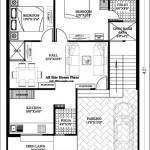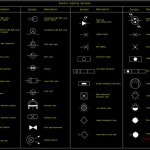Essential Aspects of Quail Cages Plans for Optimal Quail Keeping
Quail farming is a growing agricultural practice due to the nutritional value and economic benefits of these birds. To ensure the well-being and productivity of your quails, providing them with adequate and properly constructed cages is crucial.
Here are the essential aspects to consider when designing and building your quail cages:
Cage Size
The size of the cage is determined by the number of quails you plan to house. As a general rule, each quail requires at least 0.5 square feet of floor space. For example, a cage for 20 quails should be at least 10 square feet in size.
Nest Boxes
Nest boxes are essential for quails to lay their eggs. The recommended size for a quail nest box is 8 inches wide, 8 inches deep, and 12 inches tall. Place the nest boxes in a quiet and private area of the cage.
Roosting Bars
Quails naturally roost on elevated surfaces. Providing them with roosting bars will promote their natural behavior and help prevent foot problems. The bars should be placed 6-8 inches above the floor and spaced 1-2 inches apart.
Feeders and Waterers
Provide separate feeders and waterers for your quails. Choose feeders that prevent feed waste and waterers that are easy to clean and maintain. Place them at an accessible height within the cage.
Cage Materials
The materials used to construct the cage should be durable, easy to clean, and provide adequate ventilation. Commonly used materials include wire mesh, galvanized steel, and plastic. Ensure the cage is corrosion-resistant and the joints are secure.
Ventilation and Lighting
Proper ventilation is essential for maintaining good air quality within the cage. Provide ventilation holes or vents to allow fresh air to circulate and prevent the buildup of ammonia fumes.
Quails require approximately 12-14 hours of light per day to lay eggs optimally. Install artificial lighting in the cage to supplement natural daylight during shorter days.
Safety and Security
Quail cages should be designed to prevent escapes and protect your birds from predators. Ensure the cage is escape-proof by securing all openings and providing a secure roof.
Additionally, consider the following tips:
- Position the cage in a well-ventilated area with protection from direct sunlight and extreme weather conditions.
- Regularly clean and disinfect the cage to maintain hygiene and prevent the spread of disease.
- Observe your quails daily to monitor their health and well-being.
By incorporating these essential aspects into your quail cage plans, you can create an optimal environment for your birds, ensuring their health, productivity, and longevity.

Free Quail Cage Plans Yahoo Search Results House Coop Bird

Quail Cage Design And Plan Coop Raising

Quail Cage Build Made Easy Simply Homestead

The Quail Hutch Backyard Coop Plans Garden

Quail Cage Design And Plan Ens Backyard En Coops

Build A Quail Hutch 5 Steps With Pictures Instructables

Diy 3 Layered Quail Cage Building A New Layer With Superb Design Raising Tips

The Quail Hutch Backyard Coop Plans Garden

The Quail Hutch Backyard Coop Plan Ebook Instant U S And Metric Units Feet Inches Mm De

Quail Cage Design And Plan Coop Raising








